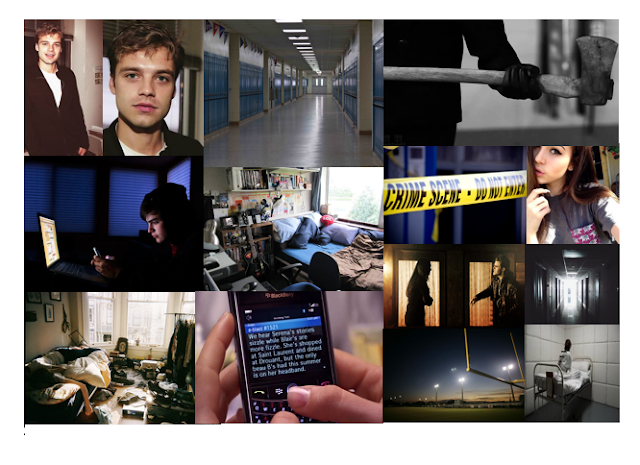The history of Crime Drama / Crime Thrillers:
Crime is a genre that has emerged through different eras that had varying attitudes to criminals. First appearing in 1900 with the publication of the first Sherlock Holmes novels. These detective books would be some of the first to explore the nature of crime and the relationships between crime and criminals. Over time, attitudes toward showing crime and portraying criminals as more human would become accepted in common media, leading to the modern crime thrillers we experience today.
1940 - 1960:

The early Holmes movies were the first time that the idea of crime was shown in a mainstream movie for a large audience. Sherlock Holmes and the Secret Weapon (1942). Holmes and Watson must assist the creator of a bomb from the German army. While this idea seems highly non-controversial now, this notion of protecting a criminal was novel at the time. Typical features of this time period include
a stereotypically 'heroic' protagonist,
a conclusion in which the protagonist catches the criminal and
a villain with no remorse.
This opened the door for the twenty year span of the film noir genre. This involved many private eye and New
York detective films, with the protagonist of a private investigator
getting involved in their client's case while trying ton remain neutral
and keeping a cold exterior. Typical deatures of these films included
a detective protagonist,
dark scenes and
more emotion surrounding the crime. This spanned 20 years, from Laura (Dir. Preminger, 1944) and continuing through to Touch of Evil (Dir. Welles, 1958)
1950 - 1985:
Touch of Evil is a film that tipifies the transition from film noir to cop dramas, with it being a blend of both.
The actual crime within the films becamke more serious and violent, following the mafia and serial killers. Mafia movies such as The Godfather and Goodfellas became box office hits. Two distinct types of crime drama ran alongside each other, cop dramas and mafia movies. These directly contrasting genres complimented each other at the time, as the protagonist in each subgenre was the opposite of the other. The fast succession of the releases of Bunny Lake is Missing (Dir. Preminger, 1965), In the Heat of the Night (Dir. Jewison, 1967) and Bullitt (Dir. Yates, 1968), all cop dramas, showed the rise of cop dramas toward the 60s and 70s.
Meanwhile, the 70s and 80s saw the rise of mafia movies as a response to the cop dramas. The Godfather (Dir. Coppola, 1972) and Scarface (Dir. De Palma, 1983) were defining movies of their decades. These movies usually featured
a central character who had power,
a strong theme of family and
the law as the enemy.
1990-Present:
Since 1990, the crime genre has changed to show the main character as the criminal the majority of the time, but the protagonist is shown as a character that you can empathise with to a greater amount. Good examples of this are Enemy of the State (Dir. Scott, 1998) and the incredibly successful TV series Dexter (2006-2013). The protagonist is a serial killer, but he is presented as human and empathetic, only killing those that he deems bad. We see him in his daytime job as a detective and how his family life is affected by his actions. This would have been unusual in the past, when all enemies were presented as purely bad. This period of crime thriller most influences our storyline- despite him committing terrible acts, you understand his remorse and mental illness is causing him to do this - he's good at heart. Features of the modern era of crime drama include
more sympathy for the villain, a greater focus on emotion and
a story that focuses on both opposing sides.







































